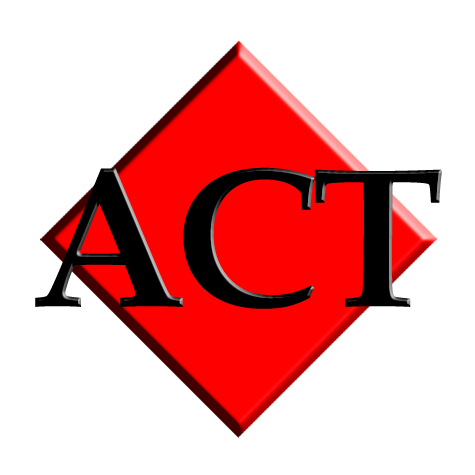2025-26 Archaeology Field School Campaign
BISA
In Short
WHO?
Students in Archaeology, Classics, Medieval Studies, History, Art History, Anthropology, Cultural Resource Management, Museum Studies, and related disciplines.
WHAT?
An International School of Archaeology where students gain practical experience in archaeological excavation, survey, and research.
WHERE?
Sorano, Tuscany, Italy
WHEN?
Throughout the year, with 2-week sessions beginning in October, February, May, July, and August.
WHY?
To learn excavation techniques, stratigraphic analysis, survey methods, applications of the latest technologies, and the theoretical approach of landscape archaeology while working in a region rich in culture, history, and natural beauty.
HOW?
By joining us! Read all the information on this website, then Submit an Application!


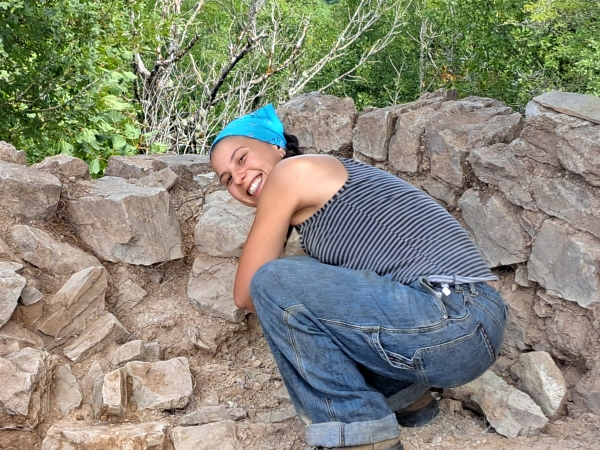
This program is offered in collaboration with the Cultural Heritage Office of Tuscany, the regional authority that manages archaeological sites and monuments.
The Archaeological Site
Although we are engaged in multiple archaeology and research projects, the 2025-26 Campaign will continue our investigation of Rocca Tedula. This 12th Century castle and military fortification has a storied history of conflict, siege, and changing ownership. Eventually destroyed in the 15th century, Rocca Tedula (also called Rocca di Montevitozzo) has been a landmark and historic emblem for the people of Montevitozzo for centuries. Untouched by archaeologists until local residents invited us to open an excavation in 2025, we are working hand-in-hand with the Montevitozzo community to secure this important cultural landmark against the threat of outside development pressures.
Our students have an exciting opportunity to examine the realities of daily life at a medieval Italian castle complex while enjoying the most breathtaking panoramic views in all of Tuscany!
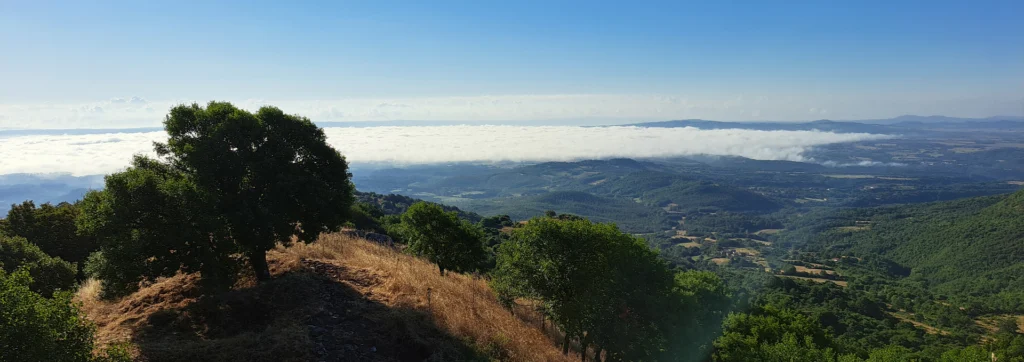

Session Dates
| Session | Dates |
|---|---|
| Autumn | October 10-24 |
| Winter | February 13-27 |
| Spring | May 8-22 |
| Summer, First Shift | July 17-31 |
| Summer, Second Shift | July 31-Aug. 14 |
The archaeology field school is organized into four annual sessions. The summer session has two shifts of 2 weeks each (total of 4 weeks). The other 3 sessions have one 2-week shift each.
Participants will benefit most if they attend at least two shifts during the campaign. Generally, this is easiest during the summer session because the summer session has two consecutive shifts.
Those who complete three shifts (even over two years) will have the opportunity to access advanced content and participate in research projects.
Objectives
Safeguarding our archaeological heritage begins with its thorough investigation and meticulous documentation. This ambitious Public Archaeology project will immerse students in both the archaeology of architecture and the study of landscape archaeology, offering hands-on experience with the most advanced techniques in survey and digital reconstruction.
In addition to conducting a traditional archaeological excavation of the stone structures near the castle tower, participants will work alongside experienced archaeologists to gain practical skills in the archaeological applications of Geographic Information Systems (GIS) and Building Information Modeling (BIM). We hope to deepen students’ understanding of military architecture, siege warfare, and the lives of the soldiers and villagers that supported the castle community.
Our objectives for the 2025-26 campaign are:
- Creation of an informative digital twin of the castle and its surrounding village, combining laser scanning and photogrammetry for a comprehensive 3D record.
- Systematic survey of the site and its environs to locate the long-lost Church of Santa Croce. This church dates back to the 12th century A.D.
- Full-scale excavation of the building uncovered during the summer 2025 season, currently interpreted as connected to craft activities.
Through this integrated approach, we aim to protect Rocca Tedula for future generations, strengthen the bond between the community and its heritage, and enhance our archaeological understanding of this region’s fascinating medieval past. In the process, we hope to foster a shared sense of stewardship and identity with the local community.
Field Activities: How We Accomplish Our Goals
We invite participants to learn archaeology where it lives: across the varied spaces of a medieval castle and its surrounding landscape.
Archaeology of Architecture
In the gatehouse, keep, and along the curtain walls, students will practice the Archaeology of Architecture. Using carefully measured drawing, close-range photogrammetry, and terrestrial laser scanning, participants will read masonry fabrics, trace building phases, map tool marks and putlog holes, and record construction joints.
In the cellars, cisterns, and other domestic structures of the medieval village, students will apply stratigraphic excavation and environmental sampling to reconstruct domestic activities, storage, and water management.
In workshops and courtyards, participants will investigate craft activities, residue traces, and circulation routes.
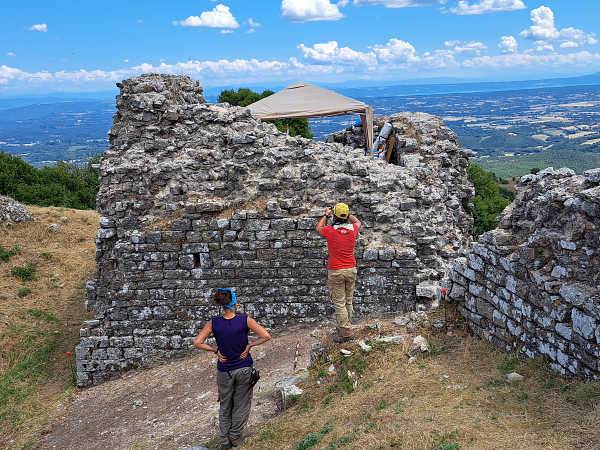
Archeologia del paesaggio
Landscape Archaeology extends these lessons beyond the ramparts: fieldwalking, drone mapping, and LiDAR-derived terrain models are combined with historical cartography to chart other archaeological sites, vie cave (“hewn roads”), pasture lines, quarries, and sightlines, situating the castle within its diachronic network of roads, fields, and power. Throughout our work, digital documentation is integral rather than add-on. Students will build georeferenced point clouds and orthomosaics, manage spatial data in GIS, and structure architectural information in BIM to produce a 3D/4D record that captures phases, materials, and interventions over time. They will use rigorous metadata, controlled vocabularies, and archiving workflows so results are transparent and reusable.
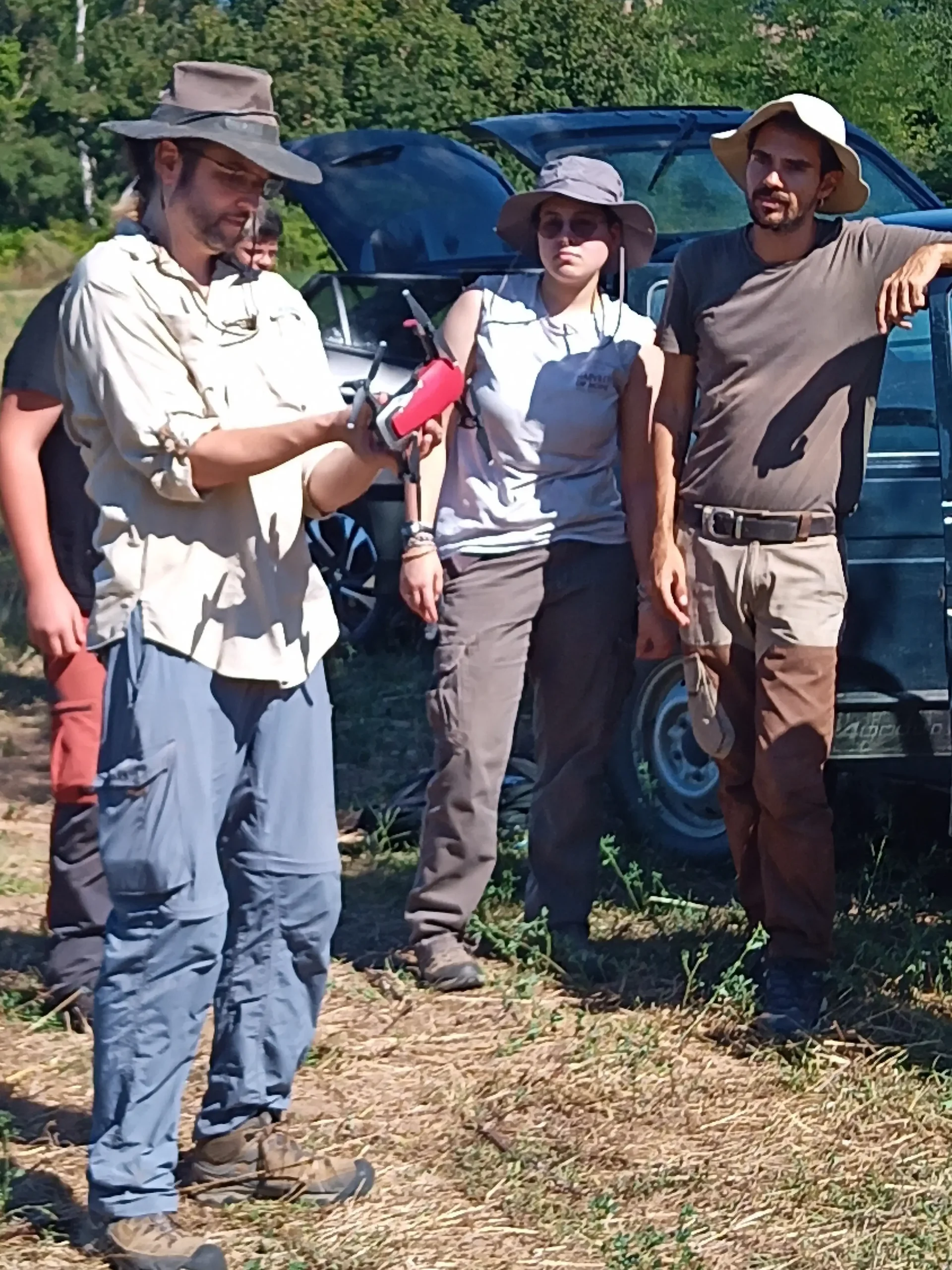
Instruction, Interpretation, and Documentation
By integrating building archaeology, landscape analysis, and end-to-end digital recording, the field school helps students develop a transferable toolkit for research, conservation, and public engagement.
Daily practice reinforces good methods. Keeping field journals, completing catalog sheets, conducting on-site interpretation sessions, and iterating hypotheses as new evidence accumulates are all skills and habits necessary for professional work.
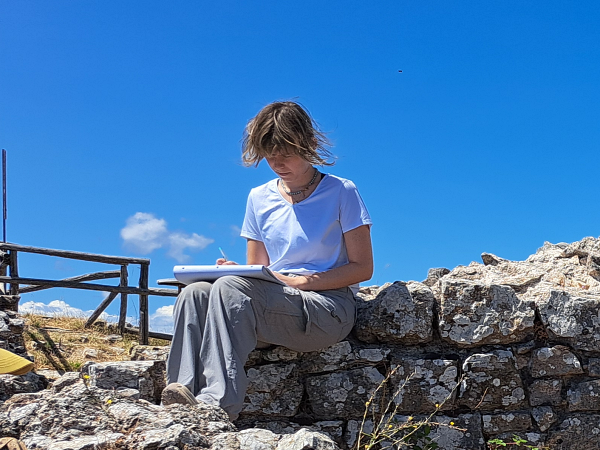
The trainees will be guided through this new adventure by a team of skilled archaeologists who will explain clearly every aspect of the research process.
Laboratory Activities
Under the supervision of a staff instructor, laboratories will run parallel to field activities. Typically, lab activities involve small groups of students at a time.
Training in drawing, pottery, vSLAM, SLAM, GIS, and open-source archaeological record labs will be provided. Depending on the needs of the field research, laboratories may add other topics. The archaeology of standing buildings, metal find preservation, anthropological analysis, and other topics are all possible.
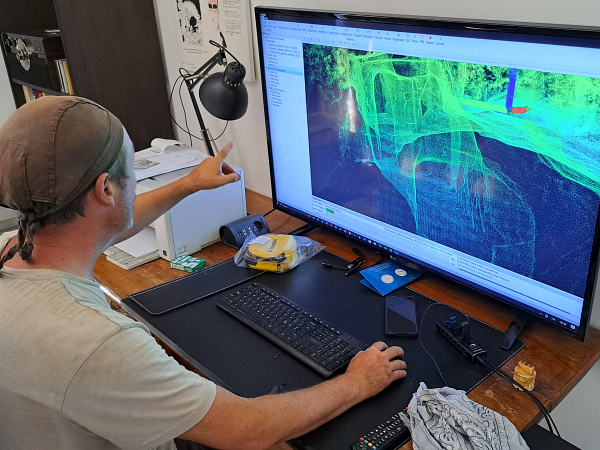
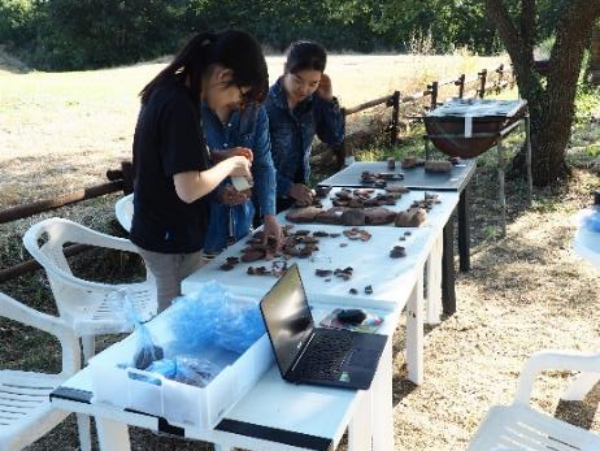
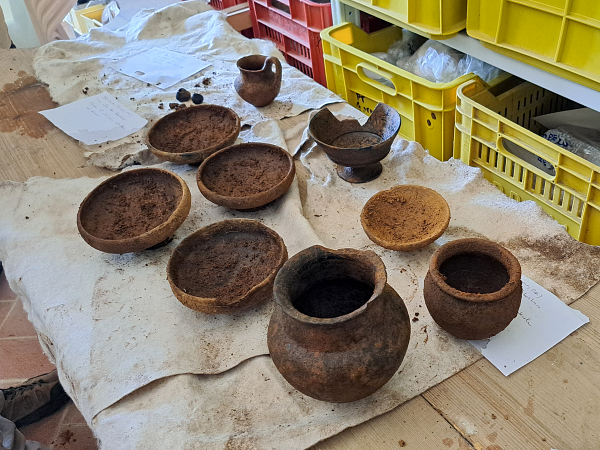
Classroom Instruction and Didactics
Training future archaeologists is one of our primary missions. Throughout the field school, we weave training and instruction into all of our activities. Our team of multilingual archaeologists will clearly explain every aspect of the work, answer questions, and engage in dialogue. English is the official language of the school, but Italian and French may also be spoken.
Lecture topics will vary with the focus and demands of each session’s field research.

Topics for 2025-26
The field school sessions in the 2025-25 campaign may include lectures on:
- Orohydrographic and geological features
- Historical environment
- Archaeological context of the regions
- Landscape archaeology
- Regional history
- Theory and methodology of stratigraphic excavation
- Remote sensing and non-invasive survey
- GIS, SLAM, LiDAR, and photogrammetry
- Analysis and conservation of artifacts and findings
- Public Archaeology
(ArcheoAmiata and PLeiAdE) - Stratigraphic methods for standing buildings
- Etruscan cities of the dead
- Wine and oil production
- Lombard smithcraft
